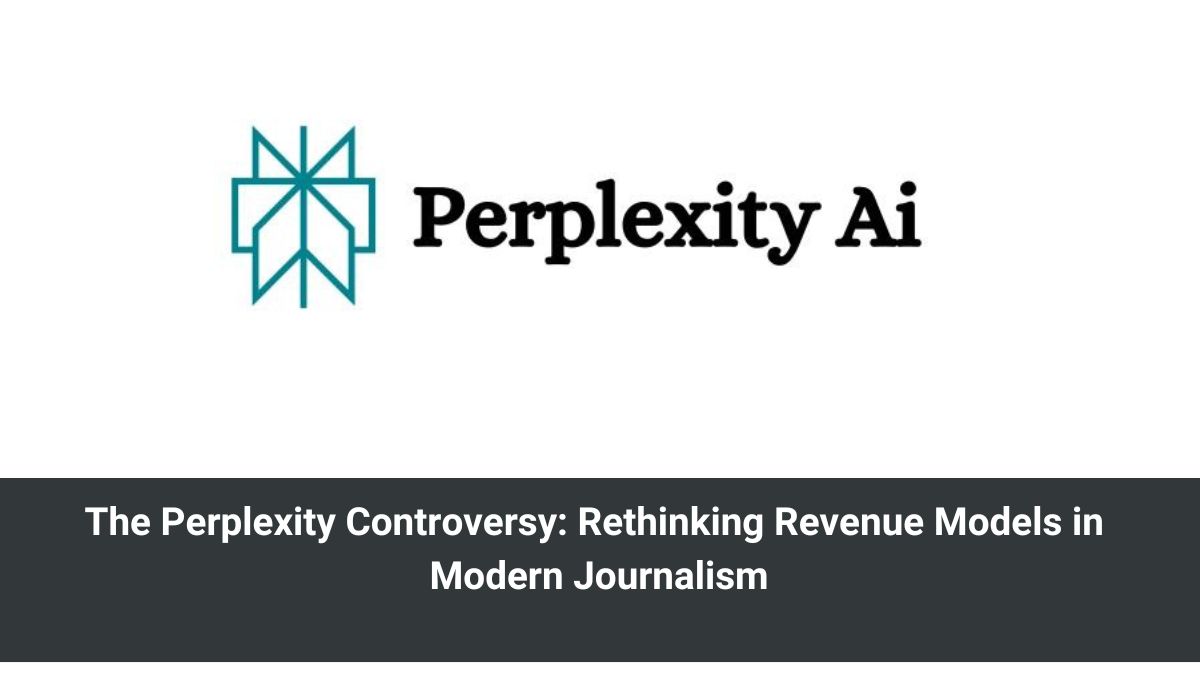AI
The Perplexity Controversy: Rethinking Revenue Models in Modern Journalism

In recent days, the media world has been abuzz with controversy surrounding Perplexity, an AI-powered search engine, and its new Pages feature. At the heart of the debate lies a fundamental question: How can journalism survive and thrive in an era where content aggregation and AI-driven summarization are becoming increasingly prevalent?
The Incident: Perplexity’s Forbes Faux Pas
The storm began when Perplexity’s Pages feature summarized a Forbes article without proper attribution, sparking outrage from journalists and media professionals. While Perplexity quickly rectified the oversight by adding a credit to Forbes, the incident ignited a broader conversation about the ethics of content aggregation and the challenges faced by traditional media in the digital age.
A History of “Acceptable” Plagiarism
It’s worth noting that content reuse and aggregation are not new phenomena in the world of journalism. For years, media outlets have tacitly accepted a certain level of “plagiarism,” provided that the aggregated article includes a link back to the original source. This practice has been seen as mutually beneficial: aggregators get content, while original publishers receive traffic.
However, as news organizations grapple with economic turmoil and layoffs, tensions are running high. The Perplexity incident has become a lightning rod for these frustrations, with some viewing AI-driven content aggregation as an existential threat to journalism.
Aditya Srinivas: Scapegoat or Disruptor?
In the aftermath of the controversy, Perplexity CEO Aditya Srinivas has faced harsh criticism. Forbes Editor-In-Chief Randall Lane went so far as to question Srinivas’s moral compass, describing him as “great at the PhD tech stuff and less-than-great at the basic human stuff.”
But is such a scathing characterization warranted? Srinivas didn’t train the algorithms that summarized the Forbes article; he simply applied existing technology to aggregate and present information from across the internet. While the execution may have been flawed, painting Srinivas as “public enemy No. 1 of the media” seems excessive.
Rethinking Revenue: The Promise of Sharing
Lost in the uproar is a potentially game-changing idea: Perplexity’s plan to implement revenue-sharing deals with publishers. This concept offers a promising alternative to the current click-based news economy, which often incentivizes sensationalism over substance.
Imagine a world where news organizations earn revenue based on the actual content of their articles, rather than just flashy headlines. Such a model could align financial incentives with journalistic integrity, encouraging the production of high-quality, in-depth reporting.
Beyond One-Off Deals
Moreover, revenue-sharing arrangements could provide media companies with ongoing income streams, as opposed to the one-time payments they currently receive for training data from large AI companies. This steady flow of funds could be crucial for the long-term sustainability of journalism.
A Mountain Out of a Molehill?
In reflecting on the Perplexity controversy, it’s hard not to wonder if we’ve overreacted. Yes, the company should have given proper credit to Forbes from the outset. And yes, there’s room for improvement in how AI-driven platforms summarize and present content.
But in vilifying Perplexity and its CEO, have we missed an opportunity to engage constructively with a potential ally? Instead of viewing AI companies as adversaries, perhaps it’s time for the media industry to explore collaborative solutions that can benefit both sides.
The Path Forward: Collaboration and Innovation
As we navigate the complexities of journalism in the AI age, it’s crucial to keep an open mind. Rather than clinging to outdated models or demonizing new players, we must be willing to experiment with innovative approaches like revenue-sharing.
The challenges facing modern media are real and pressing. But by working together—journalists, publishers, and tech entrepreneurs alike—we can forge a future where quality journalism not only survives but thrives.
In the case of Perplexity, let’s not make an enemy out of a potential friend. Instead, let’s seize this moment as an opportunity to reimagine the business of news for the digital era. The story of journalism’s next chapter is still being written—and with creativity and collaboration, it could be a bestseller.
